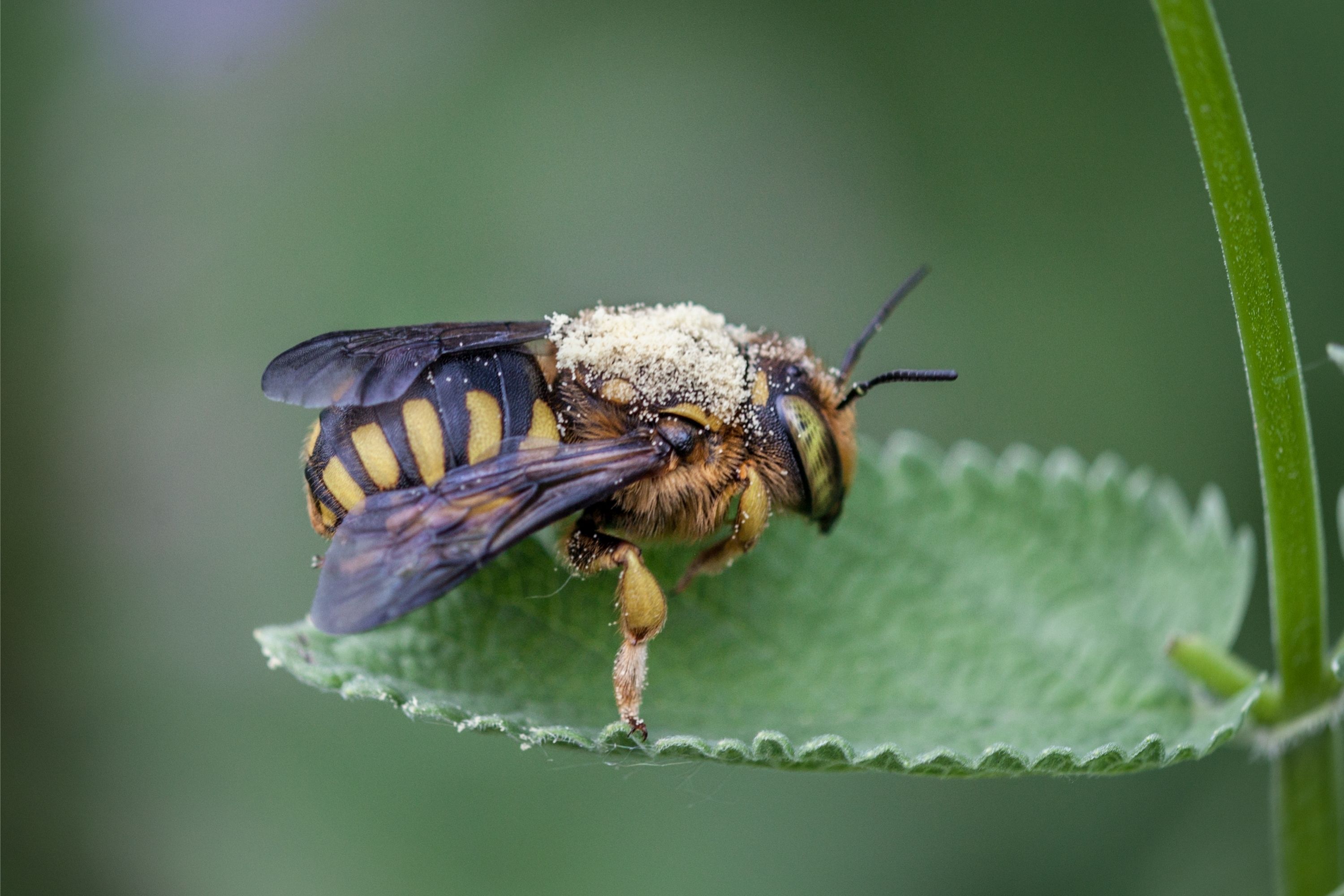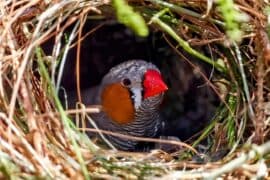European wool carder bee
(Anthidium manicatum)

Description
Anthidium manicatum, commonly called the European wool carder bee is a species of bee in the family Megachilidae, the leaf-cutter bees or mason bees. They get the name "carder" from their behaviour of scraping hair from leaves such as lamb's ears (Stachys byzantina). They carry this hair bundled beneath their bodies to be used as a nest lining. Like other members of the tribe Anthidiini, these bees do not cut leaves or petals as is typical for megachilids. The males engage in territorial behaviour, aggressively chasing other males and pollinators from their territory. This bee is native to Europe, Asia and North Africa. It has recently been seen in regions of South America, New Zealand, and the Canary Islands. They are generalists, and do not seem to prefer any plant genera for foraging, although in New Zealand native plants are visited less frequently by this bee species. It was accidentally introduced into North America from Europe some time in the mid 20th century, first seen in 1963 near Ithaca, New York, and since then an invasive pest. A. manicatum are black and covered with yellow-grey hairs. Their faces and abdomen are covered in yellow spots. Male A. manicatum have a black head and thorax, coated with short yellowish brown hairs. The cheeks below the antennae, a small spot behind each eye, a bilobate spot on the clypeus, and the mandibles (except the apex) are yellow. The wings are dusky in color. The abdomen is black with grey hairs, with a band of brown hairs at each segment's apex as well as along their lateral margins. This feature distinguishes male A. manicatum from New World Anthidium species. There is a yellow spot on each side of the segments except the 7th. A second pair of spots is often seen on the disks of the 4th and 5th segments. There is a spine on each side of the 6th and 7th segments at the apex, the 7th having a third thin spine in the middle. The legs exhibit variegation of yellow and are covered with grey hairs. Female A. manicatum are smaller in size than the males, but have a similar color pattern. The abdominal spots are smaller and the apex is rounded. Female legs are almost completely black, with very small yellow spots. Anthidium manicatum is found in parts of Europe, Asia, North Africa, and North America. It has also recently been documented in the Canary Islands, and South American countries such as Argentina, Brazil, Paraguay, and Uruguay. As of 2006, this species is also now established in New Zealand.
Taxonomic tree:







